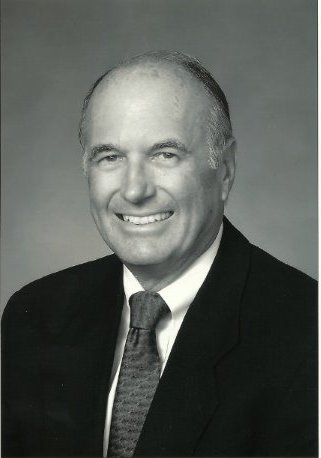[Publisher’s Note: We are pleased to offer this original commentary from retired State Senator Dick Ackerman – Flash]
If you are new to the FlashReport, please check out the main site and the acclaimed FlashReport Weblog on California politics.

Every $1 the state invests in UCLA produces $34 in economic activity. As California’s largest UC, it pumps $12.7 billion into the state’s economy every year.
These findings, from a new study of UCLA’s economic contributions, demonstrate the importance of investing in higher education to keep California’s economic recovery alive – and to position the Golden State for a more prosperous future.
In Orange County, where I live, UC Irvine is the second-largest employer and generates an economic impact on the county of $4.3 billion.
Investing in California’s public colleges and universities improves the lives and livelihoods of the young people who receive the education. It creates the educated workforce businesses need to flourish in today’s economy, and it fosters the research and innovation that pioneers new products, enterprises and industries.
Massive spending cuts to public higher education threaten future growth
But deep spending cuts in higher education threaten the future for students, the state’s economy and the innovation that has been so essential to California’s continued growth.
Since the 1970s, general fund spending for the UCs has been cut in half, dropping from about $20,000 per student to less than $10,000 in 2011-12. CSU funding fell as well, from nearly $11,000 per student in 1998-99 to $6,500 in 2011-12. Overall, the 2011-12 state budget slashed $1.5 billion from the UCs and the CSUs.
As a result, enrollments have not kept pace with population growth. California community colleges have turned away more than 600,000 students in recent years. Students can’t get the classes they need to graduate because of cutbacks in course offerings. And community college students can no longer count on the state’s promise that they can transfer to a UC or CSU if they complete their requirements.
Even more troubling is the long-term prospect for the state’s workforce. By 2025, the state will need 2.3 million more graduates with degrees, certificates and diplomas than it is on track to produce today. To reach that goal, California’s public colleges and universities will need to produce 40% more graduates each year than they do today.
It simply cannot be done with the current levels of funding.
Prioritize higher education to power the economy
It is time for California to make the investment to develop the workforce it needs for the future. The California Coalition for Public Higher Education, which I co-chair, is urging the governor and the Legislature to invest an additional $250 million each in California’s Community College, California State University and University of California systems.
With an economic recovery well underway, the Legislative Analyst’s Office is predicting $3 billion more in tax revenues than the governor proposed in his budget. This will give the state the revenues it needs to boost higher education funding and still achieve the governor’s goal of setting aside a “rainy day” budget reserve.
Already, the state increased general fund revenues for higher education by 5 percent. But that will net only about a 2.5% increase overall because general fund revenues only pay about half the cost of educating UC and CSU students. Tuition and fees pay the other half, and they were frozen.
Cost cutting and investment go together
The higher education system also adopted many cost-saving measures, including limiting salaries and administration and eliminating non-essential programs. It is also beginning to experiment with online course offerings and other educational models that can save money and improve education.
Public universities and colleges should continue to innovate and cut costs. But we must do our part as well. The future of our state and our students depend on today’s investments in higher education. Only by providing the funding needed to ensure an accessible and affordable education for all can we ensure that California will have the educated workforce it needs to prosper. That is certainly an investment worth making.
________________________________
Dick Ackerman is a former California State Senator and Assemblyman who co-chairs the California Coalition for Public Higher Education. For more information, please visit yestohighered.org

